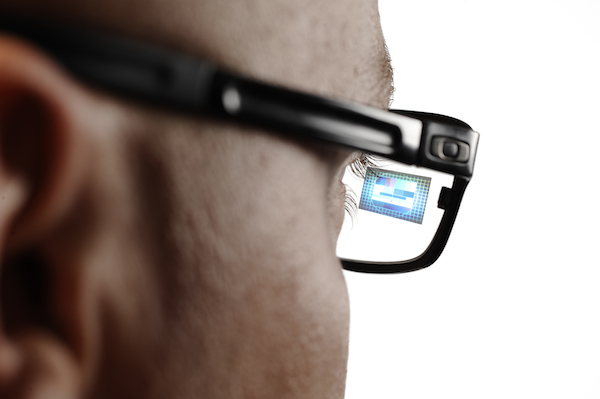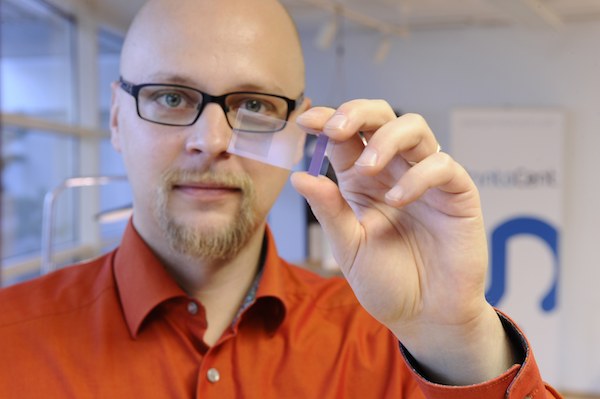
[Image above] Innovations with lightguide optics are putting high-tech displays within glass. Credit: Juha Sarkkinen; VTT
Glass is awesome.
The material makes so much of modern life possible, yet it’s often barely recognized as such a transformative material.
Glass makes possible the high-tech, yet it also subtly enhances our everyday lives—it makes your morning commute safer, lets more than just light in, keeps seafarers on course, enables land speed record attempts, foils the paparazzi—and much, much more.
Glass’s ubiquity but relative obscurity is something that was recently discussed by glass experts at the first workshop of the Functional Glass Manufacturing Innovation Consortium (FGMIC), held a couple of weeks ago in Columbus, Ohio. FGMIC, funded by the NIST Advanced Manufacturing Technology program, is making a roadmap for the functional glass industry, charting some of the biggest challenges and best bets for future research, to help guide the course of a to-be-created consortium.
In addition to the material’s everyday obscurity, glass often isn’t what people think—it’s not the thick and breakable material that most people conjure up when they hear “glass.”
Instead, glass is smart. It’s high-tech. And it keeps getting stronger and thinner.
For instance, Japanese researchers recently reported that they have made important—although preliminary—progress on glass that’s almost as strong as steel. The researchers publish in Scientific Reports that they were able to make teeny tiny amounts of glass that contains 50% alumina, giving the material a Young’s modulus to match steel.
What’s perhaps even more interesting is that the researchers achieved this feat without a container—they used aerodynamic levitation to float the mixture in air. Containerless fabrication allowed the scientists to bypass problems of previous attempts to make alumina-fortified glass, in which the glass crystallized at points of contact with the container. Plus, containerless fabrication is something of a holy grail when it comes to glass manufacturing.
“We will establish a way to mass-produce the new material shortly,” study co-author Atsunobu Masuno says in an article about the research in The Asahi Shimbun. “We are looking to commercialize the technique within five years.”
In addition to being stronger than ever, glass can do things we never though possible.
Remember this story from a year and a half ago? The one where scientists demonstrated the first example of high-quality photonic waveguides laser-carved into Gorilla Glass?
While those scientists were brining the brains to smartphones, researchers from VTT Technical Research Centre of Finland are now using a similar technology of lightguide optics to put the smarts in eyeglasses.
VTT scientists have developed lightguide display technology to integrate visual information directly into eyeglass lenses, a development that just might be able to make display technologies like Google Glass less like Google Glass.
The VTT-developed technology uses millimeter-thick elements to guide light through glass or plastic. While maintaining excellent transparency, the high-tech display can project a high quality image—equal to that of watching a 60-inch TV from 3 meters away—directly yet unobtrusively into a user’s field of vision. The tech is being commercialized by spin-off company Dispelix Oy.
“Compared to existing solutions, which are bulky or difficult to manufacture, the Dispelix solution has advantages such as the display’s thinness, lightness, aesthetic appearance and volume production compatibility,” says Antti Sunnari, managing director of Dispelix Oy.

Antti Sunnari, managing director of Dispelix Oy, holds a demonstration of the company’s glass technology. Credit: Juha Sarkkinen; VTT
The display can be freely shaped and configured depending on the application, including monochrome or multicolored displays, making it useful for a host of potential applications and configurations.
According to a VTT press release, the display will first find its way into exercise, work, and motor sport applications. “Thanks to the new display, a sportsperson will no longer need to check his or her pulse-rate from a watch—pulse-rate, navigation and activity data will be directly displayed on sport glasses.”
The team thinks its tech will also be useful in professional settings, where it could potentially “boost work efficiency by allowing workers to use both hands in difficult conditions, or to learn more about the task as the work progresses.”
The company is now fundraising and networking with other companies and partners, according to the release. “The displays are ready for volume production and the company aims to make the first customer deliveries in 2016.”

